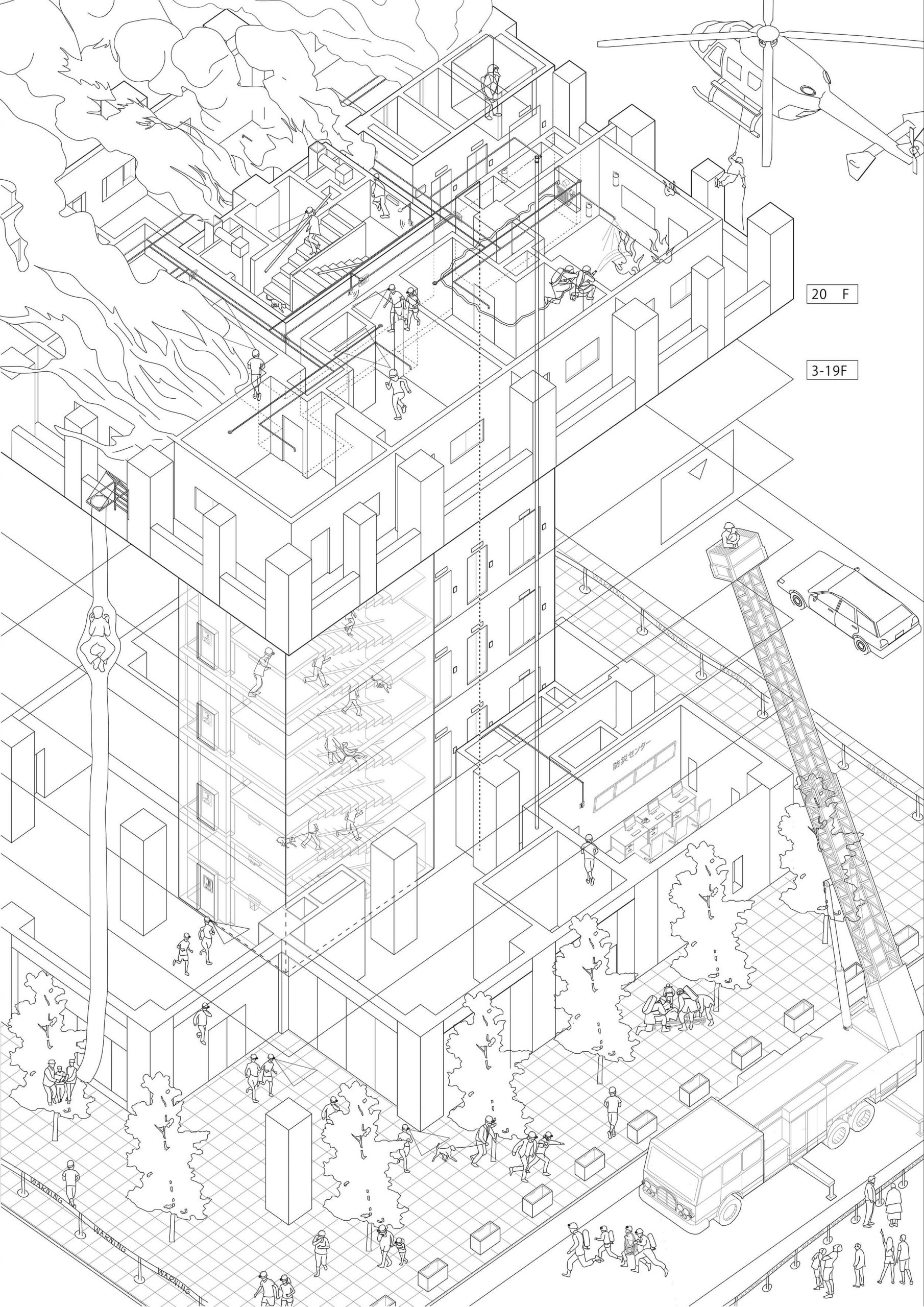From the Meiji Period to today the techniques of firefighting have shifted from the protection of a district, with large main streets or fire-resistant storehouses providing firebreaks, to en-masse fire-protected buildings, ensuring people’s ability to escape a conflagration. In the post-war period, with the densification of Tokyo, the vertical concrete staircases in multistory buildings—which themselves served as firebreaks along the main streets—became the major escape route, complemented by various types of devices that can be used from balconies or windows. In contemporary high-rises the common circulation system has become host to an entire emergency system, with smoke and gas detectors, alarms connected to ground-floor emergency centers, sprinklers, fireproof staircases, special emergency fire-fighter elevators, and even rooftop helicopter landing-pads.
Student: Shabrina Alyani
Berbheimbeuk
Gae Hiuse / Atelier Bow-Wow
Konro
One of the paradoxes of modern technology is the synchronicity between the emancipation of individuals and their collective dependency on far-reaching technical networks, fostering on the one side a new relationship between technical objects and their environments, and on the other between the technical objects and their users. The konro (a grill) is a prime example of this transformation in that it links the territorial dimension of gas networks with the intimacy of the individual kitchen. The ostensibly impersonal and faceless realms of the technical object find their correlation in the anthropomorphizing imagery of commercials. In a powerful leap from a matter of fact to a matter of concern, the blue flame of the grill is for instance transformed from a mere chemical process of methane combustion into a primordial symbol of the household, the technical object into an animated cyborg. The konro shows, in an exemplary way, how the modern kitchen has been filled by these essentially troubled cultural-technical hybrids.

